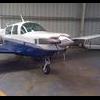This is why I upgraded from a "J' to a "K"
-
Members Online
- Fly Boomer
- Planegary
- KLRDMD
- M20E for me
- ELysek1
- dkkim73
- Robm
- Mmrkulic
- Meshach
- Jakes Simmons
- ttflyer
- Hank
- TCC
- EricJ
- onegreen
- Sabremech
- Scottknoll
- LANCECASPER
- jkarch
- Crawfish
- rturbett
- Slick Nick
- PeteMc
- Aerodon
- corn_flake
- BillyT0020
- DCarlton
- Grumpy
- redbaron1982
- AndreiC
- Ragsf15e
- RangerM20
- Dick Denenny
- Trogdor
- nosedragger
- GTO1969
- spistora
- BravoWhiskey
- CCAS
- Old Chub
- good2eat


Recommended Posts
Join the conversation
You can post now and register later. If you have an account, sign in now to post with your account.